And not the only way to make a picture book, obviously.
If it’s not my own story, then I’m starting with just a Word document or whatever of the author’s manuscript. Sometimes you can tell by the way he broke up his sections how he thinks the book ought to be paginated. But I’m free to ignore that if I like–paginating the book is the illustrator’s prerogative.
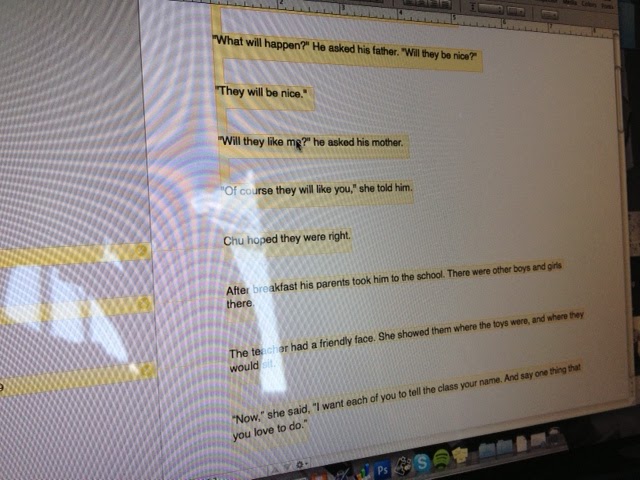 |
| A manuscript as it appears on my computer-machine. This is actually some text from the next book I’m doing with Gaiman–couldn’t find the last one. |
So I print that manuscript out and start marking it up. I draw brackets around sections that I think ought to stay together on a page or a spread. This turns into a bit of a puzzle for at least a couple reasons–because you want to be deliberate about where your page-turns are falling, and because virtually all printed books have a page count that’s divisible by eight.
In a novel you can just throw a bunch of blanks at the end to round out another eight pages if you have to, but with a picture book you need to be more precise. Add to this that nearly all picture books are either 32 or 40 pages long, and it gets even more restrictive. Few PBs are more than 40 pages. None are less than 32 (board books don’t count).*
I probably just lost half my readers discussing this stuff, so I’m bailing out now. But there are a lot of tricks for getting to the right page count, and not all of them are obvious. So to the guy in the comments section who is going to claim he found a PB with 35 pages I preemptively say: Nope. You didn’t. We can talk about it after class.**
Once I know what’s going where I can start sketching the thing out, and I always end up doing something like this:
I draw 32 or 40 or whatever little boxes on a single page of my sketchbook and start filling them in. I only have the most rudimentary notion what each page is going to look like, but this is where I usually discover the ideas that will make this my book as opposed to a book that was merely illustrated by me.
Once I have all my pandas in a row I probably sketch character designs. This is easily my favorite part of the process, when everything’s still new and the book in question is still the best thing I’ve ever done or will do.
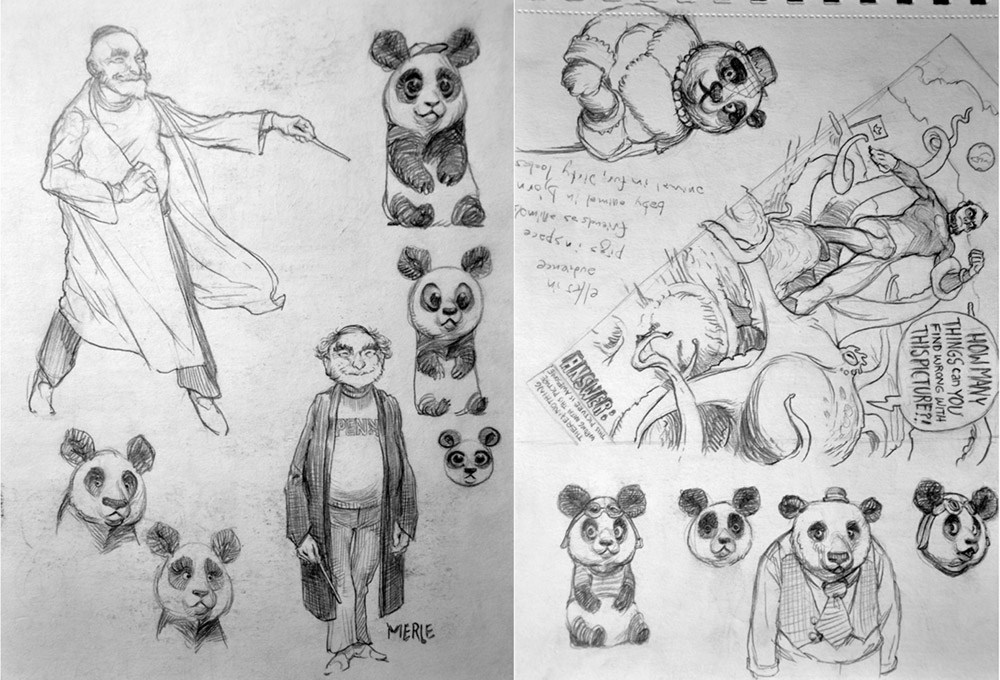 |
| On this sketchbook spread you also see Merle Lynn, a character from my COLD CEREAL trilogy, and also Abraham SuperLincoln fighting an octopus on the moon. |
I refine the page thumbnails into loose sketches, and the loose sketches into finished sketches.
Eventually I compile all the sketches into a dummy of the whole book. In the old days that meant a lot of photocopying and binding together a physical mockup. Nowadays I just assemble a pdf. This is often the first thing the publisher sees from me.
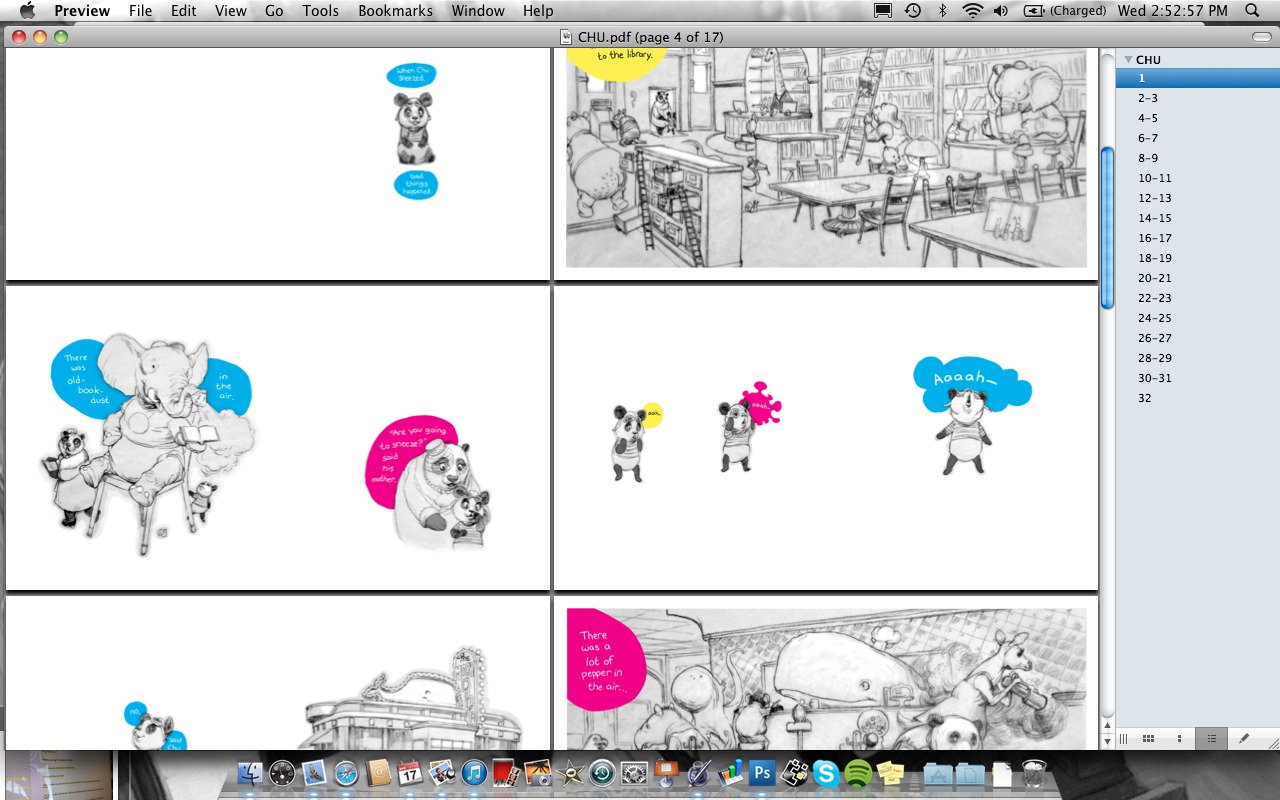 |
| The pdf is named for its inventor, Paul Diogenes Format. |
Now’s when I start entertaining comments from the editor and art director, and make changes, and fight for things I don’t want to change.
I don’t remember there being much disagreement over this particular book, though HarperCollins didn’t care for the way I was treating the text in my pdf. They nixed the CMY bubble-things, and hired a letterer so I wouldn’t have to worry about that, as I was already several months late at this point.
At this step I consider why I fail to meet deadlines, and why I’m such a constant disappointment to all who depend on me. You may want to skip this step, but I can’t seem to.
Anyway, you can guess the rest. Once the editor and I agree on everything, and the author either likes it or else the editor decides the author is wrong for disliking it and therefore doesn’t tell me, then I finish the illustrations.
I render the finishes a little differently on each book. About halfway through I’m so sick of pandas I’m actually glad they’re endangered.
When I turn in the art I’m worried that it’s totally inadequate. When the book arrives in stores a year later I only see mistakes. A few months later I love it.
Goodnight.
*It’s been pointed out to me that a small number of 24-pagers exist, so I was wrong about this. I still advise people new to the field to aim for 32-page PBs, or 40-pagers, because a publisher can’t typically price a 24-page book as high. So you’re probably not saving them any money by going shorter.
**I end up discussing this a little in the comments, if you’re interested.


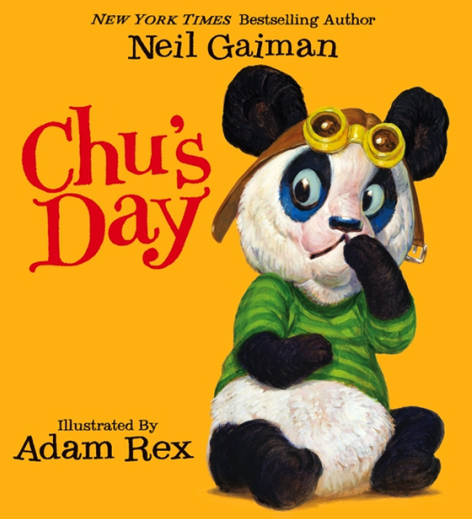


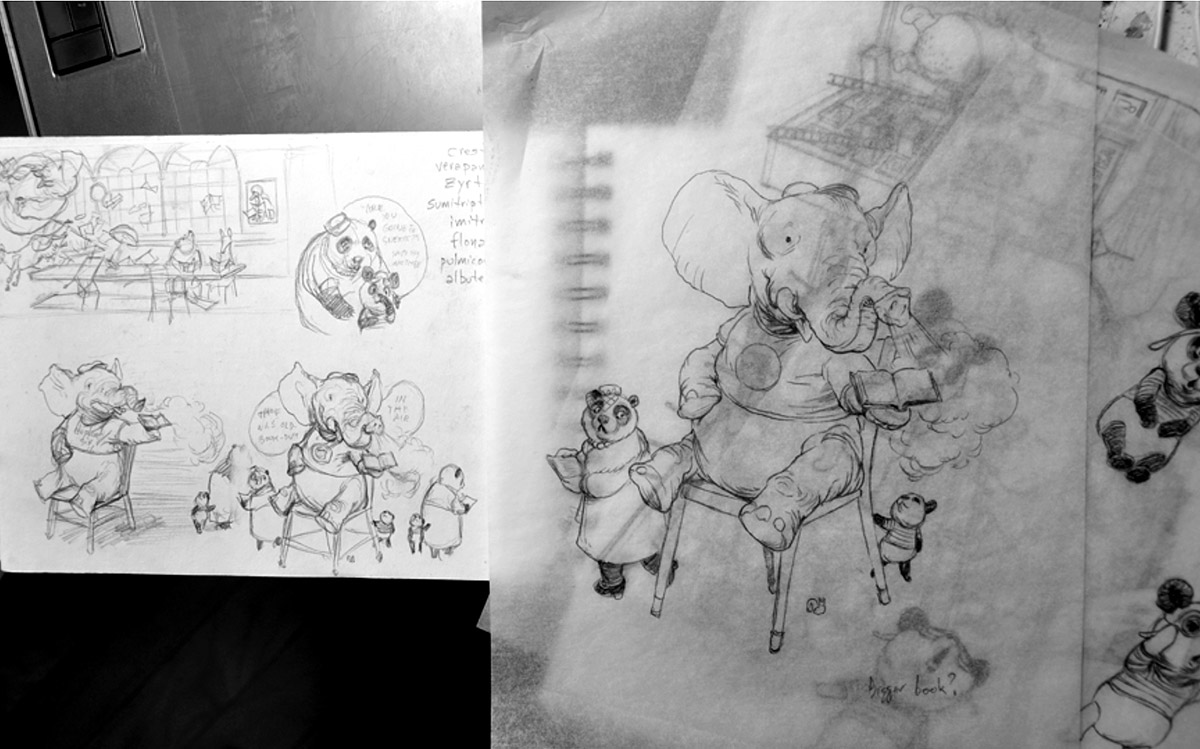
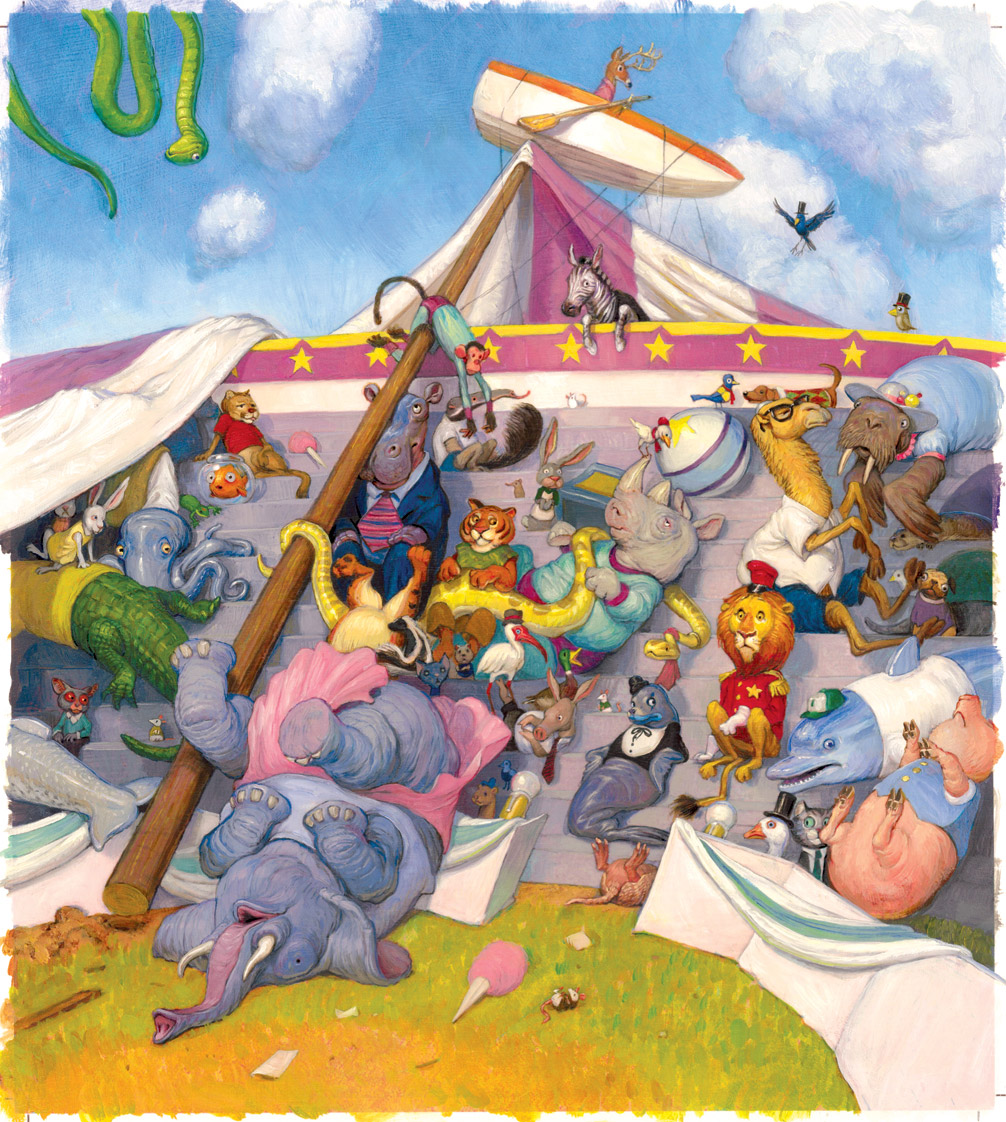
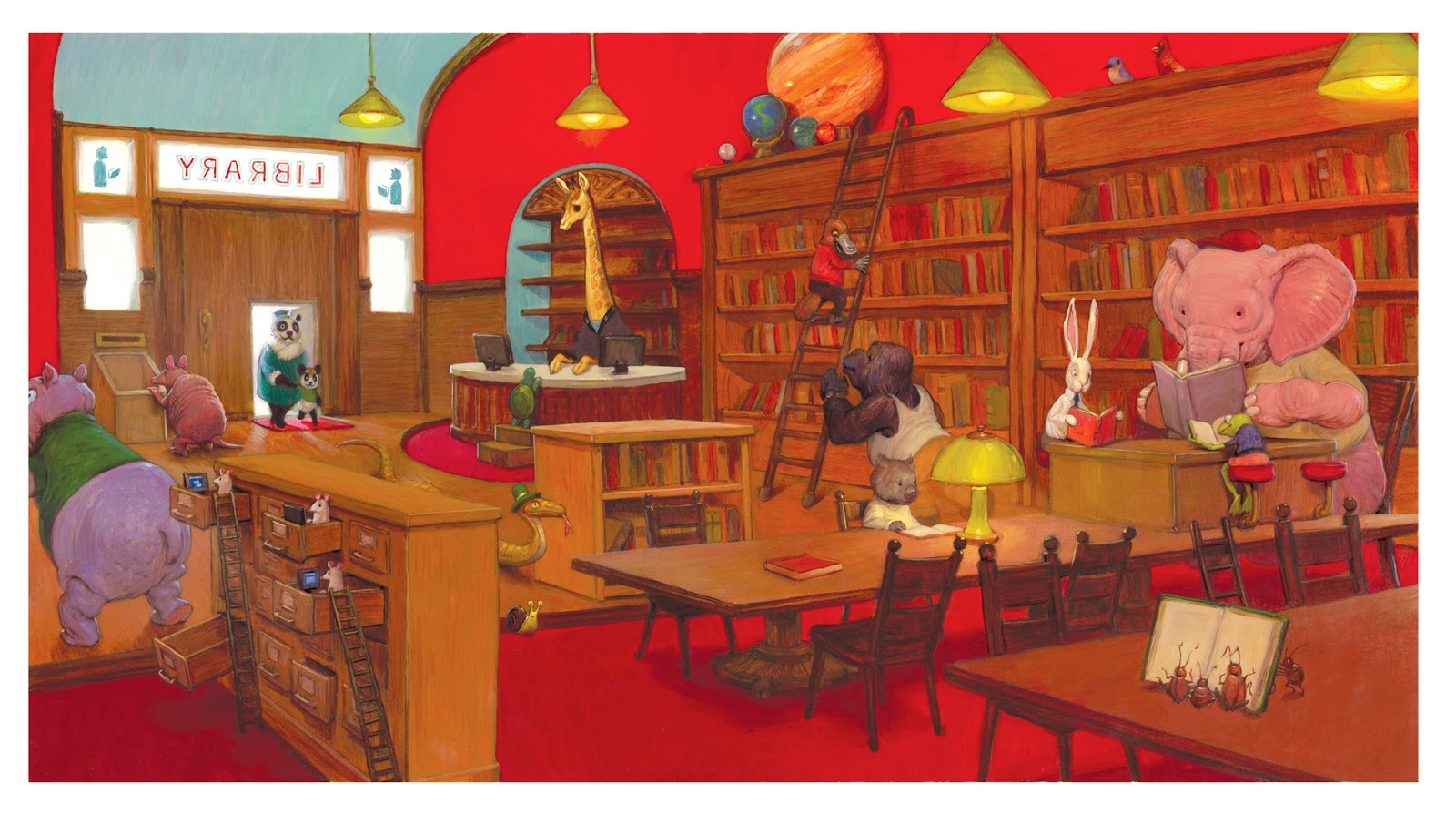
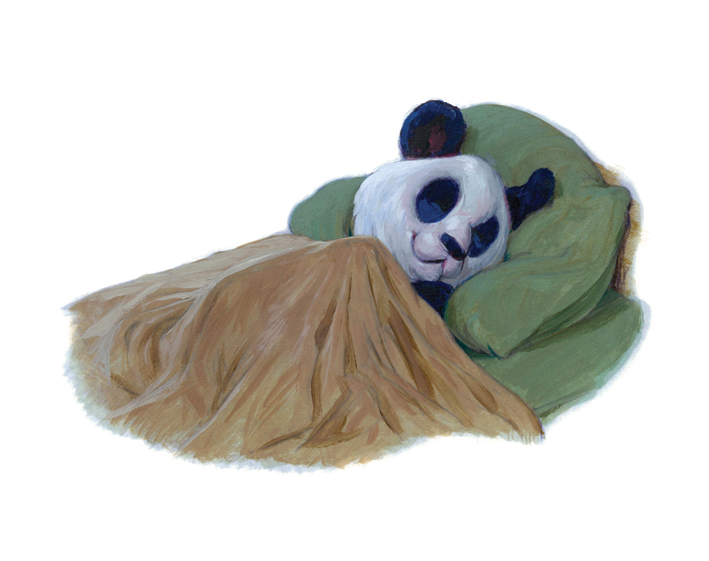
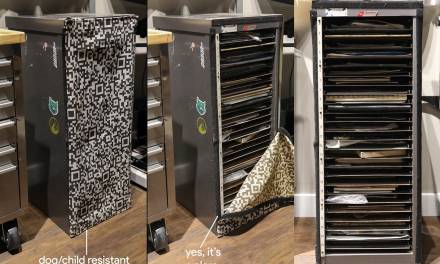
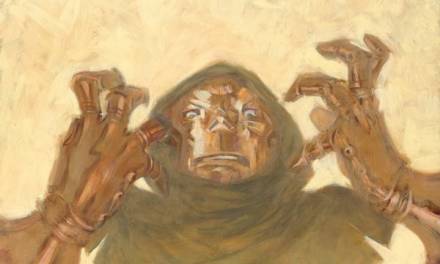
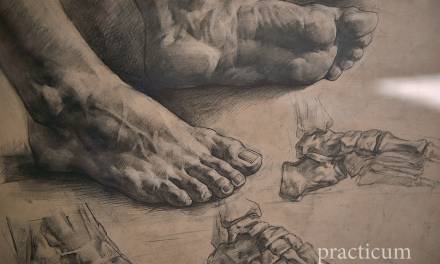
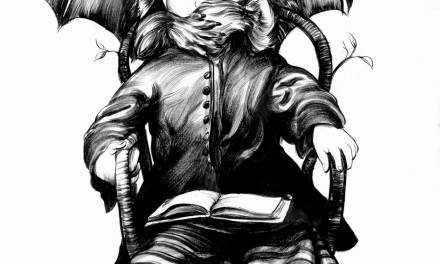

THAT is such a delightful post and fabulous bunch of images, Adam!
You tell it like it is, with aplomb.
There….I used a word that's not usually usable. I kinda thought you might like that.
Anywaaaaay…..your work inspires me to go after ideas and also to draw much more!!
Thanks!
Greg
Thanks for sharing and being so candid, Adam! I love the illustrations in kids' books and often wondered about the process behind getting the product together, it's actually pretty close to what I thought it would be (apart from the Abe Lincoln drawing, which is awesome). Love your work, those pandas are darn cute!
Great post! Can you give us a rough time frame for this? Is the whole project x amount of months, or is each phase a specific amount of weeks? And, if you are still feeling share-y, those thumbs and roughs are gorgeous, how long do those badboys usually take?
This book looks beautiful. I would have kept the CMYK balloons.
Great stuff Adam. It would be interesting to see how the process differs with your own story. I only did one book, with my own story, and the process seems very similar once the manuscript was nailed. Always the manuscript.
Two (panda) thumbs up!
The lines in your sketches are so lovely and dark. What kind of magic pencil do you use? Or is that just an effect of the scan/photo?
I really enjoy your work. Thanks for the great post Adam.
An amazingly insightful post. Thanks so much for sharing your process.
Thanks for this very honest peek into your process. Lovely sketches and finishes, (I also loved the CMYK bubbles!), and your comments about self-doubting moments are the human bits that we so often feel we're the only ones that experience and so pretend to the rest of the world that they never happen. Love it, and the book looks adorable! CMYK me inspired.
Thank you for writing this blog post. You have helped me a lot with the “where to Start” on my own picture book project.
Also, I loved the idea of using CMYK word bubbles. Great idea and design element. I and many others like me will probably end up steal this idea for our own means.
Hey Scott,
It's hard to gauge time because there's always some waiting built in–waiting for comments and so forth–and also because I'm usually working on at least one other thing at the same time. But I usually tell people that I can work on about two PBs a year, or one PB and one novel, before I have to really start sacrificing either quality or free time.
I probably spend a day on the roughest thumbnails, and if I really know what I'm doing I can dummy up the whole book in a couple of weeks.
You know, it's probably not all that different when it's my own story. I still don't do much sketching until the manuscript really feels like it's in the can.
Probably just the scan. I think I'm usually just using an HB lead.
I'm planning to steal it myself on a future book. We'll see if THAT editor and art director likes it.
“About halfway through I'm so sick of pandas I'm actually glad they're endangered.” haha I laughed so hard on this one, it made my day. With all my respect though, I think there is smth we should probaly not joke about- deadlines. Your sense of humor hides behind every line(which is awesome idd)and I am afraid some of us may just misjudge the seriousness of the matter- deadlines are one of the most important things for a beginer- we build a bad name once and we may as well go apply for McDonald's 😀
PS: I hope you fire back with some undisputed arguments about how deadlines are in fact overrated and that important…wouldnt that be one better world :]
I also liked the CMY balloons. The final was still wonderful though. I appreciate these inside lane posts. It shows that that there are so many slight variations, and yet still some important fundamentals to this process.
It's a good question. I ALWAYS made my deadlines back when I was just doing small work-for-hire assignments, and I think that was greatly appreciated.
It's been my experience that deadlines are a little more fluid in the kid's book world, but I'd still never tell anyone to blow them off, especially on their first book. Communication is often as important as meeting deadlines, so don't be like me: I tend to underestimate how long I need on a book, and agree to an unrealistic due date to make the editor happy; then I put off telling her that I'm going to be late because I don't want to disappoint her. It's like I'm still nine.
Aplomb! You just dropped an A-plomb right in the middle of that sentence.
What medium are you using here?
On my finishes? These are oils on top of a print of the digital color rough.
Great post… except I have seen 24 page picture books, so they do exist 🙂
Still a multiple of the 8 page signatures for printing, and usually they are paperbacks, but not always.
Great post, Adam! So cool to see your process 🙂
great post!
I love reading all this process stuff. And, for what it's worth, I really want to know more about how you decide how to break the text into pages.
This is totally awesome! And also inspiring! Thank you so much for sharing your beautiful illustrations, and how you got there. I look forward to more sharing times! Melody
This was quite interesting. I too enjoyed your sense of humor, but I also liked your technical perspective; nice balance.
Goodness, but that was a hilarious read. Excellent, though! Working at a publishing house, I've seen the stages of work that illustrators present, but you've shown the extra, in-between stuff that we never see. (And, quite frankly, don't always know about.)
Once again, I loved this post, and I look forward to further ones in the future. 🙂
Informative and so much fun! I'm wondering how the process is different with books that are your own text. Did the pictures come first?
I have a few technical questions, if you don´t mind, about the typical sizes for picture books? I´m planning on writing my first PB so I have no clue ¿is there a size that reduces paper waste on the production/printing end? I ask, although i´m not sure if i´ll even have it printed, depending on how the project goes, i may only publish in a digital format ¿are there any formats you prefer? landscape vs portrait vs square? have you had any books published in both digital and analog media? I know you may not have time to answer, but even if you could point me in the right direction, I would really appreciate it 🙂 and ditto on most of the above comments, its really such a great help to read the real story behind creative work rather than some glossed over highlight reel of all the correct choices the designer took to get to the end result 🙂
I'm with Gollorr – “About halfway through I'm so sick of pandas I'm actually glad they're endangered.” gave me my first laugh of the day!! I really loved reading about how you go from manuscript to finished PB! As an “author who loses all (mostly all) control over the ms she painstakingly created and sweats it out waiting to see if the illustrator selected has the same sense of humor as she”, I appreciate the behind-the-scenes look at other side of the process! I have to admit, “At this step I consider why I fail to meet deadlines, and why I'm such a constant disappointment to all who depend on me. You may want to skip this step, but I can't seem to.” made me feel better about myself 🙂
Hi Jean-Baptise,
I'm sorry not to really have an answer to your question. So far I've just selected trim sizes based on what I wanted to do and what I thought the book needed. Then the art department at the publisher has sometimes asked to modify the trim size somewhat, and that may be for financial reasons. But I haven't paid enough attention to this step to notice if here was a pattern.
Regarding aspect ratio, I choose based on what makes sense to me, so I don't really have a favorite. On a book I did in which a boy is given a blue whale to keep as a pet, it seemed crazy not to use a landscape format. On this book about a small and cute panda, I went with dimensions that were a little smaller than your average PB and made it square, because…I think squares are cute, I guess? If the instinct when designing cute characters is to make them as round as possible, then the square is the circle of the rectangle family.
Hi Adam, great process post! I was hoping you could elaborate on your “there are a lot of tricks for getting to the right page count, and not all of them are obvious” statement. Do you mean self-ended books vs. endpapers, half-titles, etc? I'd love to know what your tricks are!
A very nice post on this Adam. It helped clear up some things for me on the latest book I was working on.
“When I turn in the art I'm worried that it's totally inadequate.” <--- STORY. OF. MY. LIFE. :D It's one of the worst debilitating feelings I have towards the end of most of my illustrations, but I have seen it crop up more and more as I work on books and various comic stories. Thanks so much for the insight and thoughts on this. For the record, your artwork is superb, such a wonderful relaxed flow to the characters.
great post….I have had this question for a long time: It seems that some illustrators work is detailed that it must have been quite big in its original state……
How big are your paintings and how are the digitized….scanned or photographed or etc????????????
I just picked up a copy of Chole and the Lion at the Western Washington SCBWI conference. Mac was kind enough to sign it. I was worried he might press charges since I sort of stalked him. But he didn't. He even added a lion. Which was nice.
Seeing the thumbnails here for that was a treat. Thank you for sharing that! I really enjoyed your illustrations and characters, and felt that you were much more suited for the job than Hank Blowfeather, regardless of what Mac said.
So nice to see how similar and different everyone's process is. My husband read the last two frames and now thinks we are ALL crazy. I think it makes him feel better that it's not just me!
Yeah, my friend Brian Biggs pointed out to me that he's done several in a series.
So I'm wrong, but I'd still advise neophytes to aim for 32 or 40 pages. Publishers can't typically price 24-pagers as high, so they may be reluctant to publish them. Brian's books were something like 12 dollars instead of 17.
For me it's still typically text-first.
Yeah, it sounds like you know what I was talking about already.
So for anyone reading the comments: only those pages that are printed on the same paper as the story itself should be considered in the page count. So if the endpapers are of a different paper stock (which is most often the case), you do not count these. Such a book is called “separated ended.”
But sometimes a book's endpapers are of the same paper as the rest of the book. This is a “self-ended” book, and the endpapers count. And here's the weird part: in such a book, the first page is the one that's pasted face-down against the board. The second page is the first visible (yet still un-flippable) page, and so on. The last page is similarly pasted face-down against the back board.
A half-title is a page that displays the book's title but typically nothing else. It's accompanied by a full title page (or spread) as well.
You can also budget a full page just for a dedication, or stick that dedication with the copyright.
William Joyce once even printed the copyright info on the endpapers of a SEPARATE-ENDED book. I guess he needed the space? I've never seen anyone else do this.
Great to see a process post … the best bits were your hilarious asides! Okay you can add one more fan to your list! Thank you!
Thanks so much for posting this. I'm writing + illustrating my first picture book at the moment and find it the toughest process to uncover what i have already in my head. i wrote the manuscript but once in storyboard-land i noticed how badly my story flows from an entertainment point of view. So i feed back from my storyboarding into my script and seem to be able to give important story elements better breathing space.
When you work on your own content how do you make sure your story and the visuals are always as simple and as accessible as possible for such a young audience?
Thanks again for the great article!
I laughed really hard too about getting sick of pandas. I did a picture book about a frog and at the end —though they're not endangered— I didn't want to see another one for a long time. 🙂
Thanks for sharing!
I enjoyed this post. Thanks. A sleeping panda is a nice thing.
On my first PB I worked pretty large–something like 300% of the printed size, I think.
On this panda book I actually painted at the printed size. I have small brushes.
I think the publishers typically have them scanned rather than photographed, but I'm not actually privy to this step.
Hmm, I'm not sure. I'm afraid it might be largely instinct. I alternated big, busy compositions with some very spare vignettes and a lot of white space so as not to make the imagery overwhelming. I also find thumbnails valuable because I can determine if a composition seems legible to me even at a small scale.
In this digital age it can be valuable to look at your images at a very small size, and maybe even in black and white, to see if they still work.
It's suddenly really important to me that I use the phrase “the square is the circle of the rectangle family” during a conversation tomorrow.
Thanks for that! That's very good advice! also shows me i'm on the right track.
i love having everything on one page to constantly see the whole picture. i keep it black and white probably until i lock the story down. The scaling smaller works a treat! I also found it great to flip and flop the whole board regularly.
Thanks a lot for your thoughts!
Thanks for this fascinating and hilarious post. I'm gonna print it out and staple it to my forehead — maybe then all the cool bits will sink in. Wish you still lived in Philadelphia: I got to see your 'Dirty Cowboy' paintings at the City Hall exhibit. Woohoo.
That was a great post! It was good to read that someone of your talent and caliber has doubts when submitting the final art.
Bwahaha! My favorite line: “About halfway through I'm so sick of pandas I'm actually glad they're endangered.” Thanks for the glimpse into your head. 😛 Great post.
I was surfing the net, taking a break from the paintings I'm doing for a book about a crazy Toucan, which was supposed to be the best thing I'd ever done or ever will do, but which is currently looking woefully inadequate and is two months late, when I found this post. I feel better now. Though I still want to ask the publisher if there's time for me to start over. And Toucans should definitely be wiped out.
Deeply envious of you and your amazingness.
Don't get me started on toucans. Want to punch them in their stupid beaks.
🙂
Your post helped me tremendously. And thank you for making me chuckle. 🙂
Thanks so much for the whole post and for this answer. You're filling in little holes in my understanding of picturebooks.
Totally loved seeing this process!
Frogs *are* massively endangered, though!
Oh man, I've been wondering how you were doing it ever since Tree Ring Circus. What kind of paper do you use? And do you coat it with anything between printin' and paintin'?
We used to read English books online but never think how it build..loved to see all this process!!
Hello, thank you so much and congratulations on the illustrations, they are very nice.
I have a small doubt. When you scan the originals, what are the characteristics of the scanner? I ask this, because i see you have a lot of color, strong color, and i do to. But i am having a problem scanning them properly. Either the colors have a high contrast far from the originals, or very low intensity. In both ways, i can't manage to fix them to the original state i draw, not even in Photoshop, so i am struggling.
Once again, thank you,
Margarida
Beautiful post. Thank you.
Thank you so much for sharing this excellent info! Looking forward to reading more!
PIC Scheme Singapore
I've been wanting to get into printing children's books as well. I really like the way you lay out your process. It seems like you put in a ton of work, but the finished product really pays off. It's good to see that new authors have printing services available to them without large publishers. http://printindustry.com/Buy-Printing/book-printing.aspx
I had a plomb once, but my teacher told me it was inappropriate to have one in school.
Great post!
A very informative post, thank you! I have a question – do you make all your picture book drawings (the final ones) on tracing paper?
I love your book! Wife bought this book for our daughter, but when my daugter will grow up, it will be landing on my shelf 🙂
This is awesome. This was my daughters FAVORITE book when she was a baby, I remember tweeting to Gaiman the video of her achoo-ing. I bought it because the art was beautiful. Thank you so much for sharing!
This was my daughter’s favorite book when she was a baby. Thank you so much.
I read it in my childhood. It is awesome. thank you so much for the share.
This is a gorgeous book and was so fun reading to my son when he was younger. We love looking at all the visual in-jokes and play that you add into your illustrations. There’s so much story even without the words. 🙂